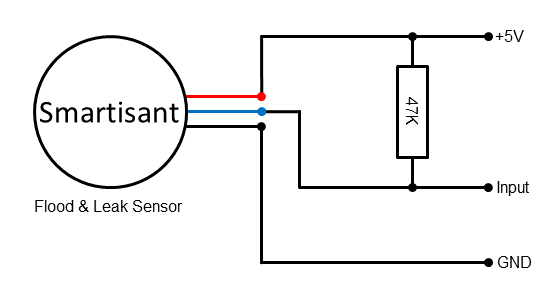

The Smartisant flood and leak sensor has been designed as a low-cost, wired sensor for extremely reliable detection of leaks and floods in new builds and for retro-fit into existing buildings.
The sensor has 3 connecting wires:

This simple test circuit enables the sensor to activate an LED. The 1KΩ resistor is used to limit the current through the output stage and the LED. The sensor output is pulled to ground when the sensor is activated. The output is rated at 10mA maximum load. When using a 12V dc supply a 2K4Ω resistor would be used.

Interfacing the sensor to an Arduino is very simple and a single 47KΩ resistor is used to pull the input HIGH. It is also possible to use the in-built pull-up resistors if the device supports this feature. The sensor output and thus the Ardunio input is pulled to ground (active LOW) when the sensor detects moisture.
For longer cable runs, it is possible to use a 12V dc supply to the sensor and an opto-isolator to interface this at the processor using the 5V signal levels required. This provides greater noise immunity and is less prone to interference.
A wider area can be covered using a single sensor, by using a collection tray or plastic sheet to guide any leaks towards the sensor.